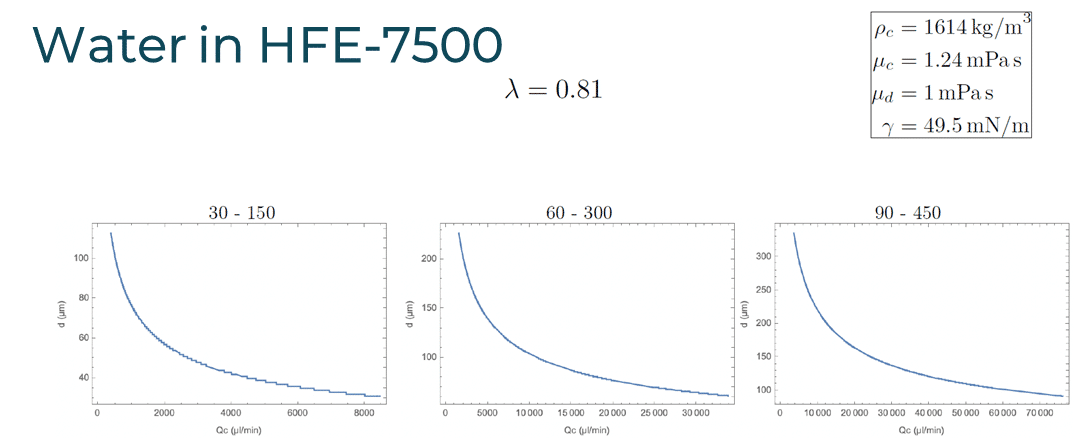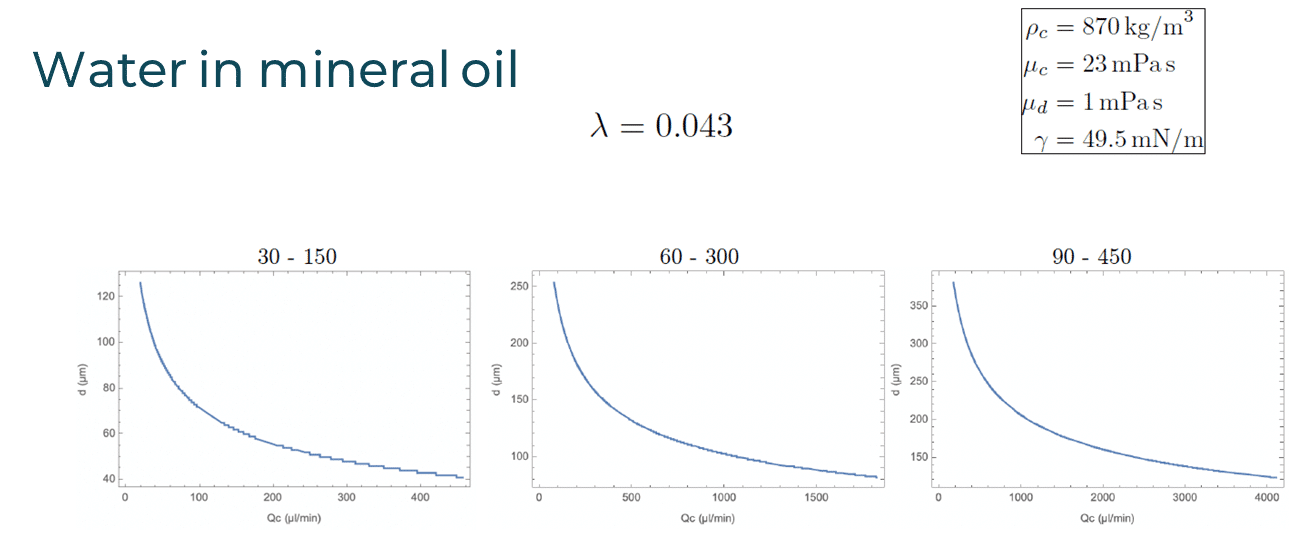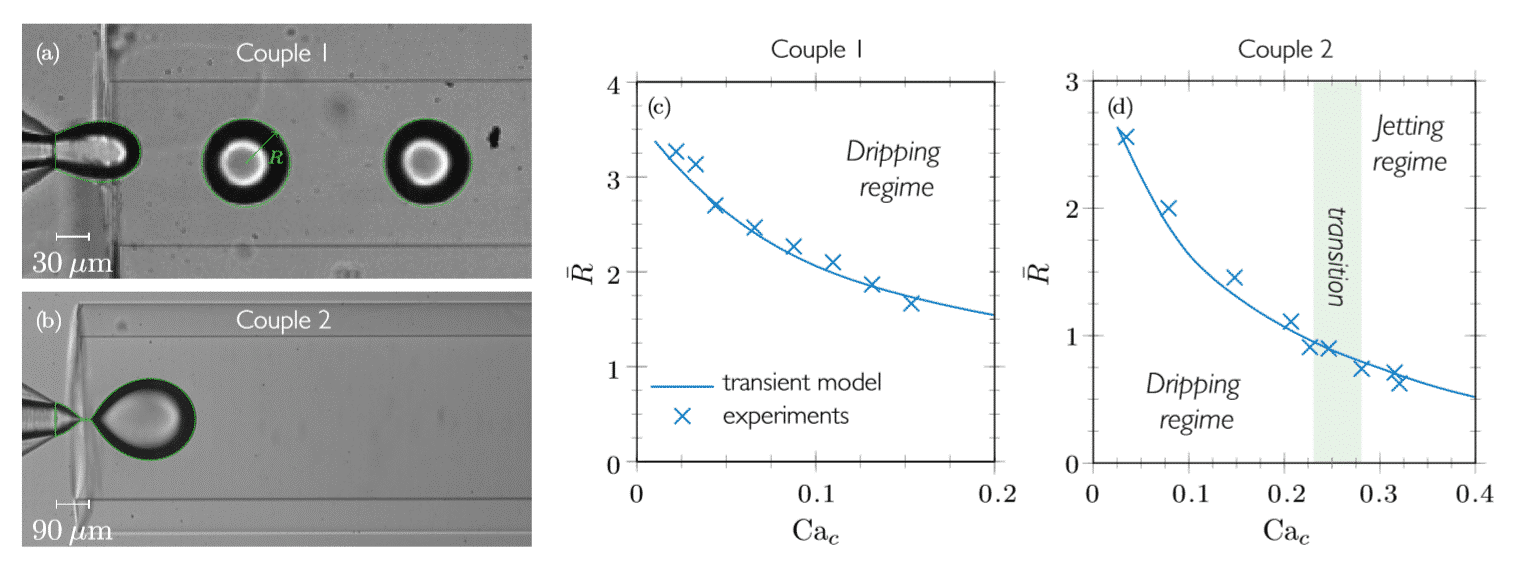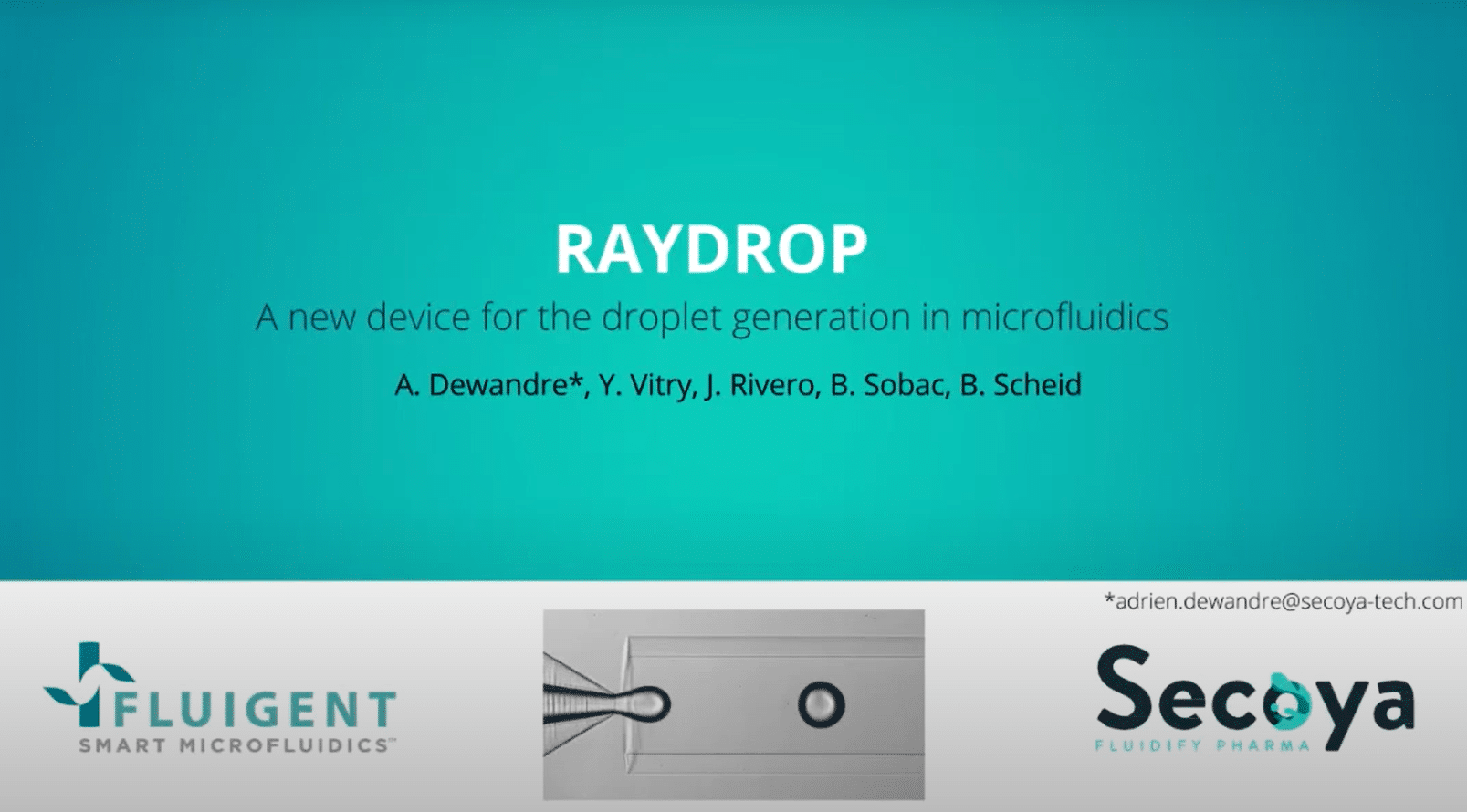Droplet Size Calculator
In the last decade, droplet-based microfluidics has been exploited in a wide range of applications, such as single cell analysis, drug delivery and diagnostics. Droplet-based microfluidics focuses on creating discrete droplets by mixing two immiscible fluids in a microfluidic channel, and each droplet can serve as an individual microreactor.
Despite many efforts to develop specific devices for droplet generation, the characterisation of individual droplets has always been a difficult task.
Therefore, we have developed a droplet size calculator based on the geometry of the RayDrop, droplet generator device developed and manufactured by Secoya.
Estimate the size of your droplets with the Raydrop! We developed a droplet size calculator based on correlations obtained from numerical modeling [Dewandre et al., 2020] to help you predict the diameter of droplets. The estimation accounts for the Raydrop’s nozzle diameter, flow rate of the continuous phase, viscosities of both phases, and interfacial tension.
Save time and use our calculator to find the set of parameters that best fit your needs!
What is the Raydrop?
The RayDrop is a microfluidic droplet generator composed of three main parts fully removable:
- An injection capillary composed of a nozzle available in 30µm, 60µm and 90µm size
- An extraction capillary available in 150µm, 300µm and 450µm size
- A body containing a chamber
How does the RayDrop work?
The RayDrop works as a co-flow focusing principle generating a hydrodynamically focused 3D stream. The nozzle and outlet capillary are aligned in continuous phase chamber, the dispersed phase comes through the nozzle to create the microparticles into the continuous phase and exit by the outlet insert. RayDrop’s design prevents wettability issues that could appear in other common microfluidic chips and allows for the generation of highly monodispersed droplet with any type of fluid.

How to mesure the size of a droplet?
Controlling droplet production rate and size has always been a strong drawback. Fluigent developed a droplet size calculator based on the geometry of the RayDrop.
Users can estimate droplet sizes based on measurements obtained from numerical modeling to help predict the diameter.
Droplet size and frequency calculator
γ: interfacial tension;
µd: dispersed phase dynamic viscosity;
µc: continuous phase dynamic viscosity;
Qd dispersed phase flow rate;
Qc continuous phase flow rate
Note that the droplet size is slightly underestimated as the dispersed phase flow rate is not taken into consideration (Qd -> 0).
Example of use: Diameter estimation of water-in-oil droplets
Water-in-mineral oil and water-in-HFE-7500 were characterized using our droplet size calculator. Droplet size was determined as a function of the device geometry, fluid properties and flow rate of the continuous phase.


The graphs summarize the results obtained with the two types of emulsions. Droplets with diameter ranging from 41 µm to 375 µm can be obtained.
Note that these predictions have been made in the limit of Qd 0 and underestimate the real droplet size for increasing values of Qd.
The theoretical model behind our microfluidic droplet size calculator
Our partner Secoya made use of numerical simulations to build the correlations used in the droplet size calculator. A system based on the continuity and Navier-Stokes equations is solved using finite element method (FEM) with moving boundaries.
The model was validated by comparing with experimental data, as shown in the figure below (Cac is the capillary number of the continuous phase).
It has next been used to predict the effect of several parameters such as viscosity ratio, flow rates and geometrical parameters (nozzle inclination angle, nozzle-capillary distance) on droplet formation.

Related Resources
- Droplet and particle generation in microfluidics
Microfluidic Droplet Production Method
Read more - White Papers
Droplet-based Microfluidics
Read more - Paper highlights
Pressure-driven flow controllers vs. Syringe pumps: A flow precision evaluation for optical blood imaging.
Read more - Advantages of pressure-based microfluidics
Flow control for droplet generation using syringe pumps and pressure-based flow controllers
Read more
